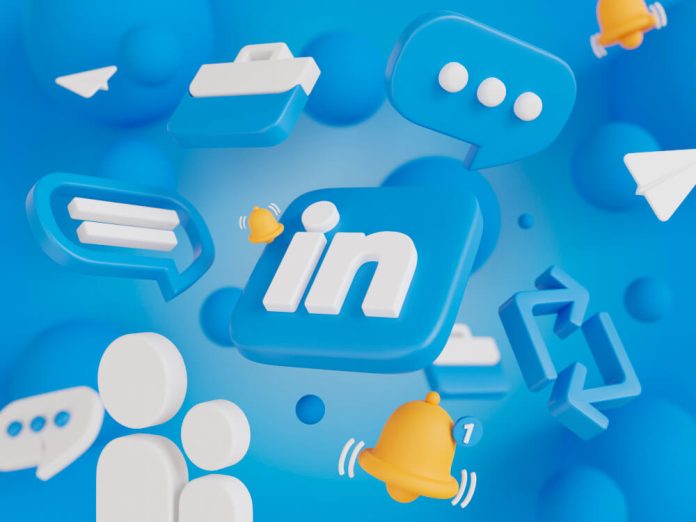LinkedIn has evolved from a professional networking site into a powerhouse platform for B2B marketing, offering unique opportunities to connect with decision-makers, generate leads, and establish brand authority.
For businesses looking to maximize their LinkedIn presence, mastering B2B LinkedIn marketing is essential. This comprehensive guide will walk you through the strategies, best practices, and tools needed to leverage LinkedIn effectively for B2B success.
Understanding the Importance of B2B LinkedIn Marketing
LinkedIn is not just a networking site; it’s a goldmine for B2B marketers. With over 900 million professionals globally, LinkedIn provides a vast audience of potential clients, partners, and influencers. According to LinkedIn, 80% of B2B leads come from their platform, making it an indispensable tool for businesses aiming to grow in the B2B space.
Why LinkedIn for B2B Marketing?
1# Targeted Audience: LinkedIn allows you to reach specific industries, companies, and job roles, making it easier to connect with decision-makers.
2# Professional Environment: LinkedIn is designed for business, providing a more professional atmosphere compared to other social media platforms.
3# Content Distribution: LinkedIn’s algorithm favors professional content, making it a great platform to share blogs, whitepapers, and case studies.
4# Lead Generation: With features like LinkedIn Ads and Sales Navigator, you can generate high-quality leads tailored to your business needs.
Key Strategies for B2B LinkedIn Marketing Success
To harness the full potential of LinkedIn for B2B marketing, it’s crucial to adopt strategies that align with your business goals. Here’s how you can do it:
1# Optimize Your Company Profile
Your LinkedIn company profile is often the first point of contact for potential clients. Ensure that it’s complete, professional, and reflective of your brand.
Profile Picture & Banner: Use a high-resolution logo and a custom banner that aligns with your brand’s identity. The visuals should be appealing and professional, as they represent your brand’s first impression.
Company Description: Craft a compelling description that highlights your company’s value proposition, services, and industry expertise. This section should communicate what your company does, who it serves, and how it stands out in the market.
Keywords: Incorporate relevant keywords like “B2B LinkedIn Marketing,” “lead generation,” and “business growth” in your profile to enhance searchability. Keywords help your profile appear in relevant searches, driving more traffic and engagement.
2# Create and Share Valuable Content
Content is the cornerstone of LinkedIn marketing. Sharing insightful and relevant content helps establish your brand as a thought leader in your industry.
Blogs and Articles: Publish well-researched articles on industry trends, challenges, and solutions. Use LinkedIn’s native publishing platform to reach a broader audience. Ensure your content is informative, engaging, and adds value to your audience.
Visual Content: Infographics, videos, and slideshows can increase engagement. Make sure your visual content is professional and aligns with your brand’s tone. Visual content is more likely to be shared, increasing your reach and visibility on the platform.
Consistency: Post regularly to keep your audience engaged. Aim for a mix of content types—educational, promotional, and conversational. Consistency in posting not only keeps your audience engaged but also signals to LinkedIn’s algorithm that your profile is active, which can boost your content’s visibility.
3# Leverage LinkedIn Ads
LinkedIn Ads offer a robust platform for B2B marketers to reach their target audience with precision.
Sponsored Content: Promote your best-performing posts to increase visibility and engagement. Sponsored content allows you to reach a larger audience, driving more traffic to your profile or website.
LinkedIn InMail: Use Sponsored InMail to send personalized messages directly to the inboxes of your target audience. InMail has a higher open rate compared to traditional email, making it an effective tool for lead generation.
Targeting Options: Take advantage of LinkedIn’s advanced targeting features, including industry, company size, job title, and more. Precise targeting ensures that your ads reach the most relevant audience, improving your return on investment.
4# Engage with Your Audience
Engagement is key to building relationships on LinkedIn. It’s not enough to post content—you need to actively participate in conversations.
Respond to Comments: Show appreciation for your audience’s feedback and engage in meaningful discussions. Responding to comments not only fosters relationships but also increases the visibility of your posts.
Join Groups: Participate in LinkedIn Groups related to your industry. Share your expertise and network with like-minded professionals. Groups are a great place to find and connect with potential clients and partners.
Endorsements and Recommendations: Encourage satisfied clients and partners to endorse your skills and leave recommendations. This adds credibility to your profile. Endorsements and recommendations act as social proof, enhancing your reputation and trustworthiness.
5# Utilize LinkedIn Analytics
To refine your LinkedIn marketing strategy, you need to understand what’s working and what’s not. LinkedIn Analytics provides valuable insights into your performance.
Track Engagement: Monitor likes, comments, shares, and click-through rates to assess your content’s effectiveness. High engagement rates indicate that your content resonates with your audience.
Follower Demographics: Analyze the demographics of your followers to ensure you’re reaching your target audience. Understanding your audience’s demographics can help you tailor your content to better meet their needs and preferences.
Lead Generation: Measure the success of your LinkedIn Ads and content in generating leads and driving conversions. Use this data to adjust your strategy and improve your results.
Best Practices for B2B LinkedIn Marketing
To make the most of LinkedIn for B2B marketing, adhere to these best practices:
1# Authenticity: Be genuine in your interactions. Authenticity builds trust and fosters long-term relationships. Avoid overly promotional content and focus on providing value to your audience.
2# Personalization: Tailor your content and messaging to the specific needs and interests of your audience. Personalized content is more engaging and effective in capturing your audience’s attention.
3# Professionalism: Maintain a professional tone in all your LinkedIn activities, from posts to private messages. LinkedIn is a professional platform, and your interactions should reflect that.
4# Continuous Learning: LinkedIn is constantly evolving. Stay updated with the latest features and trends to keep your strategy fresh. Regularly review and adjust your strategy to stay ahead of the competition.
Conclusion
B2B LinkedIn marketing is a potent tool for business growth. Through various strategies such as profile optimization, content creation, LinkedIn Ads, audience engagement, and analytics, businesses can forge a strong brand, produce quality leads, and position themselves as leaders in their respective industries. Consistency and authenticity are crucial for long-term success.
I hope you find the above content helpful. For more such informative content please visit Martecedge.







